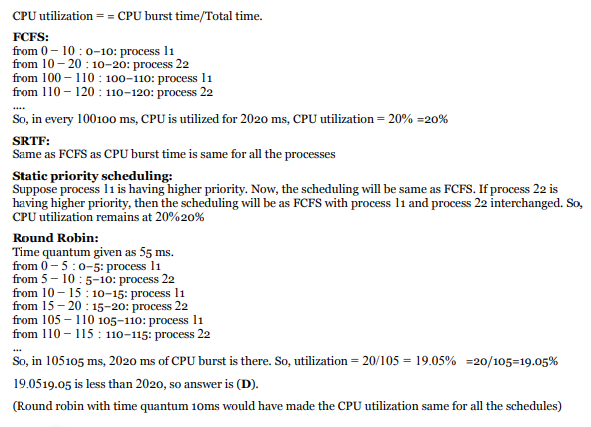Q. 66 A uni-processor computer system only has two processes, both of which alternate
10 ms CPU bursts with 90 ms I/O bursts. Both the processes were created at
nearly the same time. The I/O of both processes can proceed in parallel. Which
of the following scheduling strategies will result in the least CPU utilizations
(over a long period of time) for this system ?
(A) First come first served scheduling
(B) Shortest remaining time first scheduling
(C) Static priority scheduling with different priorities for the two processes
(D) Round robin scheduling with a time quantum of 5 ms.
Answer: (D)
Explanation:













